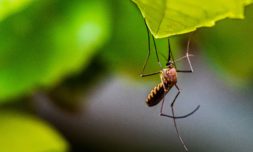Scientists have discovered a way to transform plastic bottles into vanillin, the compound which gives vanilla its aroma and taste. Is it an innovative solution to plastic pollution, or just a headline-grabbing experiment?
I’m sure you’ve heard about plenty of innovative recycling techniques, from tasteful art displays to quirky paper Coca Cola bottles.
One which you probably haven’t heard of, however, is a newly developed process that can turn old plastic into chemicals used to flavour ice cream and scent perfume. A Cornetto made from your discarded Buxton water bottle? Sign us up.
Using engineered E.coli bacteria, scientists at the University of Edinburgh have converted terephthalic acid – a monomer of plastic – into vanillin. This is the compound which gives vanilla its unique smell and taste.
This innovative breakthrough is a new form of ‘upcycling’, where chemical and bio-synthetic methods are used to re-purpose harmful waste plastics, turning them into useful materials.
Should we re-assess how we view plastic?
With the global plastic crisis unlikely to slow in the next few years, should we reconsider what is ‘wasteful’ and rethink our idea of plastic as a material?
One of the study’s researchers, Stephen Wallace, seems to think so. ‘Our work challenges the perception of plastic being a problematic waste and instead demonstrates its use as a new carbon resource from which high value products can be made’.
This is a bold statement, one which reframes the dominant narrative around waste plastic, suggesting that its very excess could work to counter shortages of other raw materials.
Global demand from vanillin is growing rapidly, with the market value of vanilla expected to rise from $510 million in 2018 to $735 million by 2026.
This, alongside a global scarcity of naturally occurring vanilla beans predominantly found in Madagascar, suggest that the researchers at Edinburgh could be on to a winning – and necessary – solution.
For a study which was only published a few weeks ago, the signs look positive. The process produces no hazardous waste, can be completed at 37 degrees (the same temperature at which beer is brewed), and requires limited materials.
Whilst more information is required to determine whether it can be reproduced on a large scale, corporations worldwide will no doubt keenly follow future developments.




















